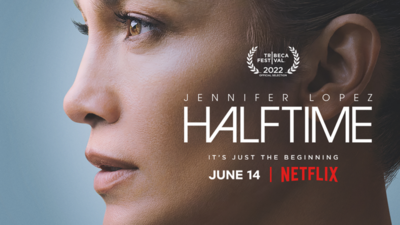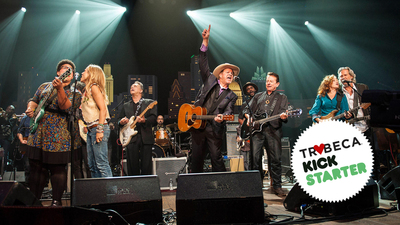
BY BRAD GYORI |
In a World of Digital Media, "Soft Skills" Are Hard
Brad Gyori, an instructor at Tribeca Flashpoint Academy, reexamines the distinctions between hard skills and soft skills.

Editor’s Note: Brad teaches the future makers of media at Tribeca Flashpoint Academy. His students have been immersed in the digital world throughout their lives. We write a lot about where the Future of Film is headed in this blog. This post focuses on how that future is being learned and created in today’s classroom and how that should shift our view of education as well as film.
One of the sad ironies of higher education is that so-called “soft skills” are often lumped in with vocational training in a manner than renders them either indistinguishable from, or worse yet, inferior to so-called “hard skills.” According to this perspective, serious learning only occurs in the lecture hall, not in an environment where people actually acquire hands on experience.
In fact, the more familiar phrase is “hands on training,” as if this type of instruction is more about domesticating than educating. It assumes that the bodies of students must be sedentary in order for their minds to be fully engaged. This is a dangerous fallacy. It suggests that all participatory education is predictable and formulaic like memorizing an instructional manual.
It makes no distinction between fixing a broken air-conditioner and organizing a convention of air conditioning repairmen, even though the former can be accomplished in a step-by-step fashion by following universally applicable guidelines, whereas the latter involves all sorts of context-specific variables.
The confusion stems from two competing definitions of the word “hard.” One denotes things that are clear and predictable. So-called “hard skills” are defined as such because they are tangible, fixed and firm. In this sense, they are clearly harder than soft skills, which necessarily involve adjusting to largely unpredictable circumstances. But such complexities draw our attention to another possible definition. The word “hard” can also mean “difficult, challenging and complicated.” In this sense, soft skills are much harder. Although they are often viewed as intuitive and “touchy feely,” they actually entail higher forms of cognitive processing such as problem solving, innovation and self-organization. This is the chief irony of the hard/soft distinction.
In a similar sense, practitioners of the so-called soft-sciences (sociology, anthropology and psychology) are sometimes viewed as less rigorous than practitioners of the so-called “hard sciences” (physics and biology). In terms of what is predictable and measurable, the hard sciences are certainly harder. Yet, in terms of grappling with all manner of unpredictable variables, the soft sciences are clearly harder. That is because the soft sciences—like “soft skills”—are related to human interactions. Human beings are not lumps of clay or billiard balls. We have the ability to self-determine, which makes us endlessly fascinating and impossible to neatly pin down.
Sadly, even those who are willing to allow that soft-skills are, in many respects, more demanding than hard skills are likely to persist in viewing both as fundamentally inferior to lecture-based instruction. Those who cling to this position should be encouraged to share the road with motorists who have learned to drive by merely sitting in a classroom and receiving verbal instruction about how a steering wheel and brake pedal are supposed to work.
Driving is a soft skill that cannot be mastered via mere step-by-step instruction or rote memorization. Even if a 12-year-old’s legs are long enough to reach the pedals, we do not allow him to drive. This is because we sense his mind has not yet developed to the point where he is able to track his position—not sitting behind a desk, but sitting behind the wheel—moving along a particular trajectory while simultaneously maneuvering through shifting traffic patterns.
Driving a car is certainly “hands on,” yet due to contingencies involving traffic, road and weather conditions, it involves far more so-called “soft skills” than, say, filling a gas tank, or changing an air filter. It is much more challenging, exhilarating and dangerous.
When educators discuss the need to revolutionize the academic system and find new ways to cultivate “21st century skills, they are advocating a reexamination of the traditional value hierarchy and its tendency to view teacher-centered, lecture-based instruction as the non plus ultra of the modern pedagogy.
This outdated view conforms to the cookie cutter testing of the “no child left behind” era, an approach completely out of touch with the first generation that grew up self-organizing via digital media, often in ways far more sophisticated than their parents and teachers.
Today’s students are acquiring soft skills every time they get on Facebook or dive into an RPG, but these informal settings should be countered with formalized education that can guide them toward truly constructive and innovative social and professional practices.
Maybe we should envision a new value hierarchy where soft-skills instruction—with its tendency to foster high-level cognition—is acknowledged as more intellectually stimulating than both hard skills and lecture-based instruction and thus viewed as the apex of educational achievement. After all, few CEO’s take standardized tests and write essays, but they all work on projects, self-determine, problem-solve and innovate. They have no choice because, in any competitive environment, soft skills are survival skills.
The distinctions between hard skills, soft skills and lecturing needs to be reexamined, yet these differing approaches cannot be entirely divorced from one another.
In my role as a media arts professor, I teach courses that involve all three styles of instruction. When teaching the hard skills of screenplay formatting, the primary difficulty involves keeping students on task and engaged. When lecturing about the history of a particular film genre, I encourage critical thinking during question and answer sections. And again, I need to make sure students are taking notes and tracking key points. Still, without a doubt, the most challenging part of my job involves overseeing the execution of actual student projects, the type of instruction that is primarily about so-called “soft skills.”
Hard skills tend to be divorced from context and fairly universal (there is only one proper way to format a script). Lecture-based instruction is more nuanced and complex, but it is also primarily about imparting information. Soft skills, in contrast, are heavily context-dependent and highly interactive. When focusing on them, I am no longer in complete control of the agenda. Instead, I have to customize my instruction and critique to unique projects created by unique individuals.
One team may be creating an animated satire, another a murder mystery, another a documentary exposé, another a tragic opera. All four teams need guidance tailored to the particular genres they are creating within, the particular production choices they have made, the particular personalities of the people comprising their team, and the particular production difficulties they are encountering at particular moments along the way. None of those things can be anticipated in advance and written into a carefully premeditated lesson plan.
This is what makes soft-skills instruction so hard for both students and educators.
It is also what makes it so rewarding.
Photo: Flickr/U.S National Archives

